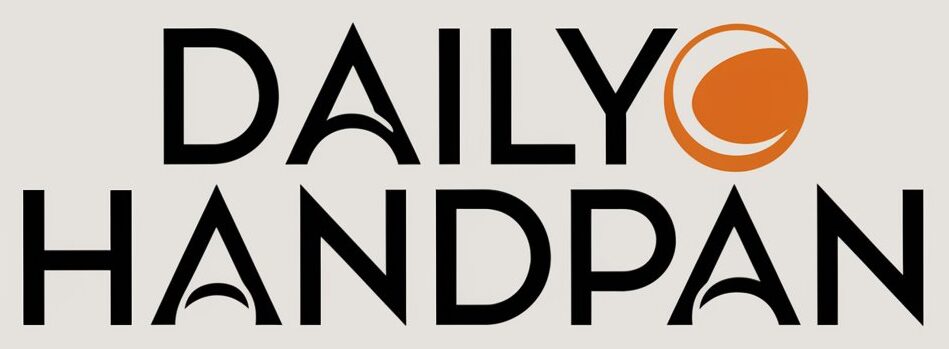The handpan, a captivating musical instrument that melds melody and rhythm, has fascinated musicians and enthusiasts around the world. Its unique timbre and ethereal sound make it a joy to play, but achieving and maintaining that perfect sound requires precision and the right tools. This article delves into the essential handpan tuning tools, offering a comprehensive guide to ensure your handpan remains in optimal condition.
Handpan tuning is an art that combines skill, patience, and the right instruments. Whether you are a seasoned tuner or a beginner, understanding the various tools at your disposal is crucial for effective handpan maintenance and tuning. Here, we explore the different tools used in handpan tuning, their functionalities, and how to use them effectively.
1. Tuning Hammers
The tuning hammer is perhaps the most recognized tool in handpan tuning. These hammers come in various shapes, weights, and sizes, each tailored for different tuning needs.
Types of Tuning Hammers
- Rubber Mallets: Ideal for fine-tuning the handpan’s higher notes without causing damage to the metal surface.
- Metal Tuning Hammers: Used for more substantial adjustments, particularly on thicker handpans or when setting the initial note structure.
- Wooden Hammers: Provide a balance between rubber and metal, offering both precision and force when needed.
Using the right hammer for the job ensures you can shape and refine the notes without compromising the instrument’s integrity.
2. Tuning Forks
Tuning forks are essential for establishing a reference pitch during handpan tuning. These tools vibrate at a set frequency, providing a standard tone against which you can compare and tune the notes on your handpan.
Using Tuning Forks
- Strike the fork against a surface to make it vibrate.
- Place the base of the vibrating fork on a resonant part of your handpan.
- Compare the pitch of the fork to the note being tuned and adjust accordingly.
Tuning forks ensure your handpan’s notes are in harmony with each other and conform to a standard pitch, which is crucial for playing with other musicians or alongside other instruments.
3. Strobe Tuners
Strobe tuners are highly precise devices that visually display the accuracy of a note. Unlike standard electronic tuners, strobe tuners use spinning lights to indicate pitch variations, offering unparalleled accuracy.
Advantages of Strobe Tuners
- Precision: Can detect even the slightest deviations in pitch, making them indispensable for fine-tuning.
- Real-Time Feedback: Offers immediate visual feedback, allowing for quick and precise adjustments.
- Versatility: Suitable for tuning a wide range of instruments, not just handpans, adding to their utility.
While strobe tuners can be more expensive than other tuners, their accuracy and reliability make them a worthwhile investment for serious tuners.
4. Electronic Tuners
Electronic tuners, while not as precise as strobe tuners, are still highly effective and more accessible for many handpan players. These devices can be clipped onto the handpan or placed nearby to pick up and display the pitch of the notes.
Benefits of Electronic Tuners
- Convenience: Portable and easy to use, making them perfect for on-the-go tuning.
- Affordability: Less costly than strobe tuners, making them a practical choice for beginners and intermediate players.
- Multi-Functional: Many electronic tuners come with additional features such as metronomes and tone generators.
Despite their slight reduction in precision compared to strobe tuners, electronic tuners are still highly effective for most tuning needs and are an essential part of any handpan player’s toolkit.
5. Frequency Analyzers
Frequency analyzers are advanced tools that provide detailed visual representations of sound frequencies. These can be software-based programs run on a computer or as standalone devices.
Using Frequency Analyzers
- Play a note on your handpan and capture the sound using a microphone connected to your frequency analyzer.
- Analyze the visual representation (such as a waveform or spectrogram) to identify the fundamental frequency and harmonics.
- Make tuning adjustments based on the frequency diagram until the desired pitch and harmonic structure are achieved.
Frequency analyzers are invaluable for advanced tuners who require a deeper understanding of their handpan’s tonal characteristics and are particularly useful for diagnosing complex tuning issues.
6. Contact Microphones
Contact microphones, or contact mics, are specialized microphones that pick up vibrations through direct contact with the instrument. These are particularly useful in noisy environments or for more precise tuning.
Benefits of Contact Microphones
- Isolation: Isolates the sound of the handpan from external noise, ensuring accurate tuning.
- Precision: Can detect subtle nuances in the handpan’s sound that might be missed by standard microphones.
- Versatility: Useful for live performances and recording sessions as well as tuning.
Using contact microphones can significantly enhance the tuning process, providing clear and isolated feedback from the handpan’s notes and overtones.
Conclusion
Tuning a handpan is a meticulous process that blends technical skill with an artistic touch. Equipped with the right tools—whether tuning hammers, tuning forks, strobe tuners, electronic tuners, frequency analyzers, or contact microphones—you can ensure that your handpan maintains its beautiful, harmonious sound. Each tool serves its unique purpose and knowing when and how to use them is crucial for achieving the best results.
Investing in quality tools not only makes the tuning process more efficient but also prolongs the life and enhances the sound quality of your handpan. As you hone your tuning skills, these tools will become indispensable allies in your musical journey, allowing you to perfect your instrument and continue sharing its enchanting music with the world.
FAQs
1. What is the most essential tool for beginner handpan tuners?
For beginners, a good quality electronic tuner is essential. It is user-friendly, affordable, and provides accurate readings to help you start tuning your handpan effectively.
2. Can I use a smartphone app for tuning my handpan?
Yes, there are several smartphone apps available that can aid in tuning your handpan. However, while convenient, they may not be as accurate as dedicated tuners like strobe tuners or electronic tuners.
3. How often should I tune my handpan?
Handpans should ideally be checked and tuned every few months, depending on how frequently you play them. If you notice any off-pitch notes or a change in sound quality, it’s time to tune your instrument.
4. What is the difference between a strobe tuner and an electronic tuner?
Strobe tuners are more precise and provide real-time visual feedback using spinning lights. Electronic tuners are more affordable and portable but might not offer the same level of precision as strobe tuners.
5. Why is a contact microphone useful for handpan tuning?
Contact microphones isolate the sound of the handpan from external noise, providing accurate feedback even in noisy environments. They are particularly useful for detecting subtle nuances in the handpan’s sound.





